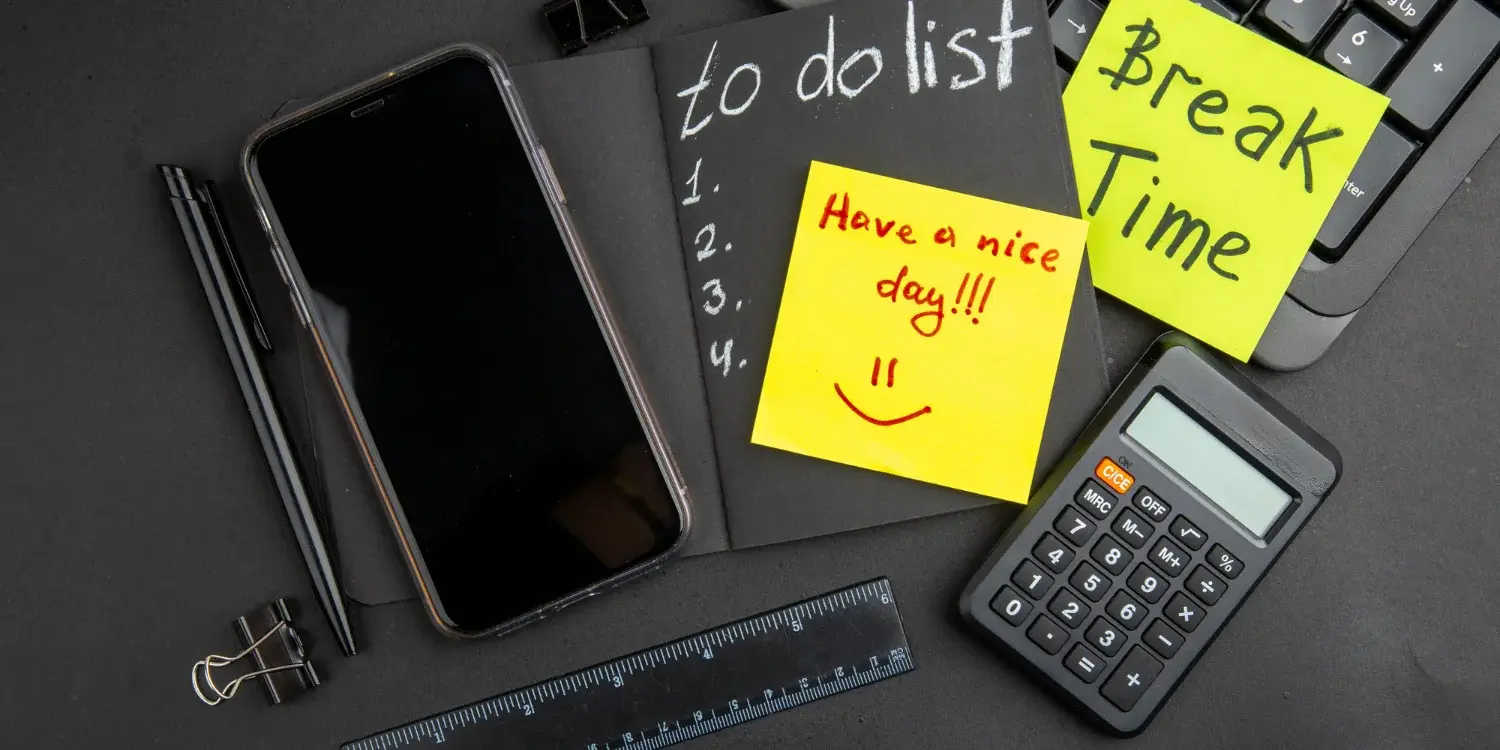10 Time Management Tips to Achieve More in Less Time
Many of us struggle with time management challenges. Between juggling work, personal responsibilities, and unexpected interruptions, it's easy to feel overwhelmed and unproductive. Procrastination often takes hold, leading to missed deadlines and increased stress. If these scenarios sound familiar, you're not alone.
This post is here to help you navigate these common productivity hurdles. We'll provide you with practical strategies and proven techniques that can transform the way you manage your time. By implementing these tips, you'll not only boost your efficiency but also achieve a better work-life balance. Let's dive into the actionable advice that can make a real difference in your daily routine.
1. Prioritize Your Tasks
Effective prioritization is the cornerstone of excellent time management. Start by identifying the most critical tasks that will have the greatest impact on your goals.
Practical Approaches:
- Use the Eisenhower Matrix: Divide tasks into four categories—urgent and important, important but not urgent, urgent but not important, and neither. Focus on the tasks that fall into the first two categories.
- Set Clear Goals: Define what success looks like for each day, week, and month to ensure you're working towards meaningful objectives.
Real-life Example: Sarah, a marketing manager, uses the Eisenhower Matrix to organize her to-do list. This method allows her to focus on strategic projects rather than getting bogged down by minor tasks. "By prioritizing effectively, I've been able to deliver higher quality work without burning out," she shares.
As Stephen Covey, author of The 7 Habits of Highly Effective People, states, "The key is not to prioritize what's on your schedule, but to schedule your priorities." This emphasizes the importance of aligning your daily activities with your long-term goals.
2. Break Tasks into Smaller Steps
Large projects can be daunting, leading to procrastination. Breaking tasks into manageable steps makes them more approachable and easier to complete.
Strategic Methods:
- Create a Step-by-Step Plan: Outline each phase of a project to avoid feeling overwhelmed.
- Set Mini-Deadlines: Assign deadlines to each step to maintain steady progress.
Real-life Example: John, a software developer, tackles complex coding projects by dividing them into smaller modules. This approach not only simplifies the process but also provides a sense of accomplishment as each module is completed.
Breaking down tasks ensures that you maintain momentum and see continuous progress, preventing the paralysis that often accompanies large projects.
3. Utilize Time-Blocking Techniques
Time-blocking involves dedicating specific time slots to different tasks or activities, enhancing focus and productivity.
Implementation Tips:
- Allocate Dedicated Time Slots: Designate chunks of your day for specific activities, such as emails, meetings, and focused work.
- Avoid Multitasking: Concentrate on one task at a time within each block to maximize efficiency.
Real-life Example: Emily, a freelance graphic designer, schedules her mornings for creative work and reserves afternoons for client communication and administrative tasks. This structure helps her maintain a clear boundary between different types of work.
According to a study by the Stroop Effect, "Focused time blocks can significantly improve task performance and reduce mental fatigue," highlighting the effectiveness of this technique.
4. Implement the Pomodoro Technique
The Pomodoro Technique is a time management method that enhances focus and combats procrastination through structured intervals.
Practical Strategies:
- Work in 25-Minute Intervals: Concentrate on a single task for 25 minutes, followed by a 5-minute break.
- Take Longer Breaks After Four Pomodoros: After four cycles, take a 15-30 minute break to recharge.
Real-life Example: Michael, a writer, uses the Pomodoro Technique to maintain creativity and prevent burnout. The structured breaks allow him to refresh his mind, resulting in more coherent and creative writing sessions.
This method not only boosts productivity but also helps in maintaining sustained concentration over longer periods.
5. Leverage Technology and Apps
Incorporating the right tools can streamline your workflow and enhance time management capabilities.
Recommended Tools:
- Task Management Software: Use apps like Trello or Asana to organize and track your tasks.
- Calendar Apps: Utilize Google Calendar or Outlook to schedule and manage your time effectively.
Real-life Example: Lisa, a project manager, relies on Asana to assign tasks, set deadlines, and monitor project progress. This visibility ensures that all team members are aligned and tasks are completed on time.
As noted by productivity expert David Allen, "A good system helps you manage the tasks in front of you without overwhelming your mind," underscoring the importance of utilizing technology to stay organized.
6. Set SMART Goals
Setting Specific, Measurable, Achievable, Relevant, and Time-bound (SMART) goals provides clarity and direction in your time management efforts.
Goal-Setting Tips:
- Be Specific: Clearly define what you want to achieve.
- Ensure Measurability: Establish criteria to track progress and success.
Real-life Example: Tom, a sales representative, sets a SMART goal to increase his monthly sales by 15% within three months. By having clear metrics and a timeline, he can monitor his progress and stay motivated.
SMART goals create a structured pathway to achieving your objectives, making it easier to allocate time and resources effectively.
7. Minimize Distractions
Eliminating or reducing distractions is crucial for maintaining focus and enhancing productivity.
Effective Strategies:
- Create a Dedicated Workspace: Designate a specific area for work to minimize interruptions.
- Limit Digital Distractions: Use tools like website blockers to prevent access to distracting sites during work hours.
Real-life Example: Anna, a remote worker, sets up a home office free from household distractions. She also uses apps like Freedom to block social media during her dedicated work periods, allowing her to concentrate fully on her tasks.
Reducing distractions leads to higher quality work and more efficient use of your time.
8. Practice Delegation
Delegation involves assigning tasks to others, freeing up your time to focus on more critical activities.
Delegation Tips:
- Identify Tasks to Delegate: Determine which tasks can be handled by others without compromising quality.
- Choose the Right People: Assign tasks to individuals with the appropriate skills and capabilities.
Real-life Example: Mark, a team leader, delegates routine administrative tasks to his assistant, allowing him to concentrate on strategic planning and decision-making. This not only enhances his productivity but also empowers his team members.
Effective delegation ensures that tasks are completed efficiently while allowing you to focus on high-priority activities.
9. Maintain a Healthy Work-Life Balance
Balancing work and personal life is essential for sustained productivity and overall well-being.
Balance Strategies:
- Set Boundaries: Establish clear limits between work and personal time to prevent burnout.
- Incorporate Breaks and Leisure: Schedule regular breaks and leisure activities to recharge.
Real-life Example: Karen, an entrepreneur, strictly adheres to her work hours and ensures she dedicates time each evening to relax and spend with family. This balance helps her remain productive without sacrificing her personal life.
Achieving work-life balance not only enhances productivity but also contributes to long-term happiness and satisfaction.
10. Continuously Review and Adapt
Regularly reviewing your time management strategies allows you to identify what's working and what needs improvement.
Review Techniques:
- Conduct Weekly Reviews: Assess your progress and adjust your plans as needed.
- Seek Feedback: Gather input from colleagues or mentors to refine your approach.
Real-life Example: Daniel, a software engineer, reviews his time management practices every Sunday evening. This reflection helps him identify inefficiencies and implement changes for the upcoming week, ensuring continuous improvement.
Continuous adaptation ensures that your time management strategies remain effective and aligned with your evolving goals.
Conclusion
Mastering time management is pivotal for achieving more in less time and improving overall productivity. By prioritizing tasks, breaking them into manageable steps, and utilizing effective techniques like time-blocking and the Pomodoro Method, you can enhance your efficiency significantly. Additionally, leveraging technology, setting SMART goals, minimizing distractions, delegating tasks, maintaining a healthy work-life balance, and continuously reviewing your strategies are all essential components of effective time management. Implementing these strategies will not only help you accomplish your goals but also create a more balanced and fulfilling life.
Leveraging a productivity app can further streamline these practices and provide you with the tools needed to overcome your productivity challenges. Embrace these tips and take proactive steps towards a more organized and productive lifestyle.
time management, productivity tips, prioritization, Pomodoro Technique, SMART goals, focus strategies, delegation, work-life balance, productivity tools, goal setting
You May Also Like
These Related Stories

Part-Time Job, Full-Time Student: Time Management Hacks to Do It All

Master Your Day: Proven Time Management Techniques & Tips

No Comments Yet
Let us know what you think